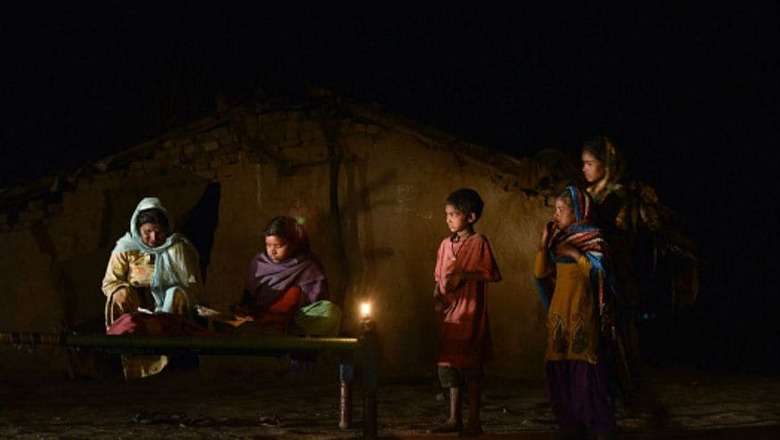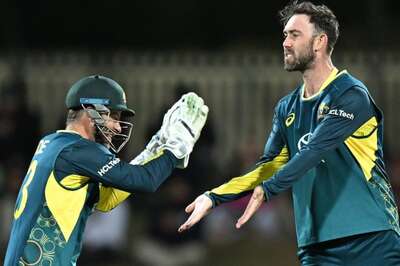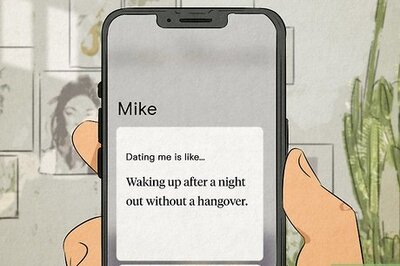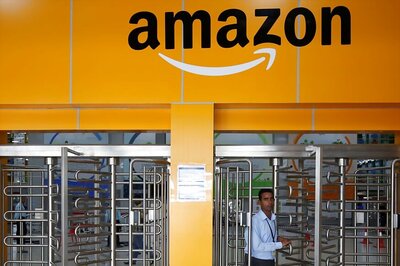
views
New Delhi: As the government and opposition trade charges over the pace of electrification in India’s villages, they should worry about what this means in terms of providing an electrical connection to each rural household.
Merely providing a village “access” to electricity does not automatically mean each household would necessarily get a connection. And even when households get that connection, there are issues with quality and duration of the power supply.
This weekend, India achieved the important milestone a little ahead of schedule and well in time for some bragging rights for the Modi government. The Congress, though, mocked this achievement, with spokesperson Randeep Singh Surjewala tweeting:
अमित शाहजी, भारत में कुल गाँव 6,49,867 हैं। कांग्रेस ने 97% गाँव को बिजली से जोड़ा। UPA(2004-14) सरकार ने 10 साल के दौरान 1,07,600 गाँव को बिजली से जोड़ा था। 60 सालों में कांग्रेस ने औसतन 10000 गाँव तक बिजली पहुँचाई। कांग्रेस ने #PowerFullIndia बनाया पर झूठी मशहूरी नहीं की 1/2 pic.twitter.com/tqwbDvyYCE — Randeep Singh Surjewala (@rssurjewala) April 29, 2018
2/2 Dear Modiji/Piyushji, On 26th May,2014; only 18,452 villages were without electrification. BJP Govt took 46 months to complete this at at an average of 4,813 villages per year. This is - ‘celebrating inefficiencies’ & taking ‘fake credit’ for Congress work. pic.twitter.com/U270EK2pee — Randeep Singh Surjewala (@rssurjewala) April 29, 2018
Statistics from the Ministry of Power show how 28,706 villages were electrified in 2006-07 and over 18,300 each in 2009-10 and 2010-11. Surjewala’s tweets went on to say that on May 26, 2014, only 18,452 villages were without electrification. “The BJP government took 46 months to complete electrification at an average of 4,813 villages per year. This is ‘celebrating inefficiencies’ & taking ‘fake credit’ for Congress work.”
But in 2013-14, the last year of the UPA II, the pace of electrification fell even below that cited for the NDA government, at an average of 99.75 villages per month.
The electrification of villages is still such an ambiguous term as there are states like Jharkhand and Uttar Pradesh, where not even half the households have a connection. Even though each village now has access to electricity, almost every sixth rural household across the country does not have a connection.
The number of rural households without a connection is 17.4% at 3.14 crore.
Why does government’s assertion about having provided access to electricity to each village not translate into all houses having a connection? The catch lies in the definition of an electrified village. According to Rural Electrification Policy 2006, a village is reported as electrified if:
— Basic infrastructure such as Distribution Transformer and Distribution Lines are provided in the inhabited locality, as well as the locality inhabited by weaker sections of the society/hamlet where it exists.
— Electricity is provided to public places like Schools, Panchayat Office, Health Centres, Dispensaries and Community Centres etc.
— The number of households electrified is at least 10% of the total number of households in the village.
Therefore, even if 10% of the total households in a village get electricity, the entire village is considered electrified. Since the definition was provided in 2006, it is obviously the handiwork of the UPA government.
Some of the states, though, have achieved an enviable level of household electrification. Government data shows that Andhra Pradesh, Tamil Nadu, Kerala, Goa and Puducherry have 100% household electrification. Only one state in this list is under BJP rule. Compare this to states like UP, Bihar and Odisha and the difference in easy to spot.
Uttar Pradesh has the largest number of non-electrified households at 1.33 crore. This is followed by Bihar at over 31.98 lakh households and Odisha at 30.88 lakh. Only about two in three households in Odisha have an electricity connection, while only three of four households in Bihar have a connection.
Even when a household in an electrified village has a connection, there is little chance of uninterrupted power supply. Government data shows that Arunachal Pradesh has the worst record in this regard at 11.75 hours of electricity supply per day on an average. Uttar Pradesh is the second on this list with just 12.46 hours, while Haryana manages to supply just about 12.48 hours of electricity a day to its villages.
Prime Minister Modi launched the Pradhan Mantri Sahaj Bijli Har Ghar Yojana (Saubhagya) in September 2017 with a mandate to electrify all un-electrified households before the end of this fiscal year. Is that achievable?
This report of a Parliamentary Standing Committee notes that as of January 31 this year, only 2.83 crore BPL households could be given free electricity connections under the 2005 universal electrification scheme. Therefore, providing electricity connections to 3.56 crore more households — the target set by PM Modi — and that too in a one-year timeframe “seems to be a herculean task”.
(The author is a senior journalist. Views are personal)



















Comments
0 comment